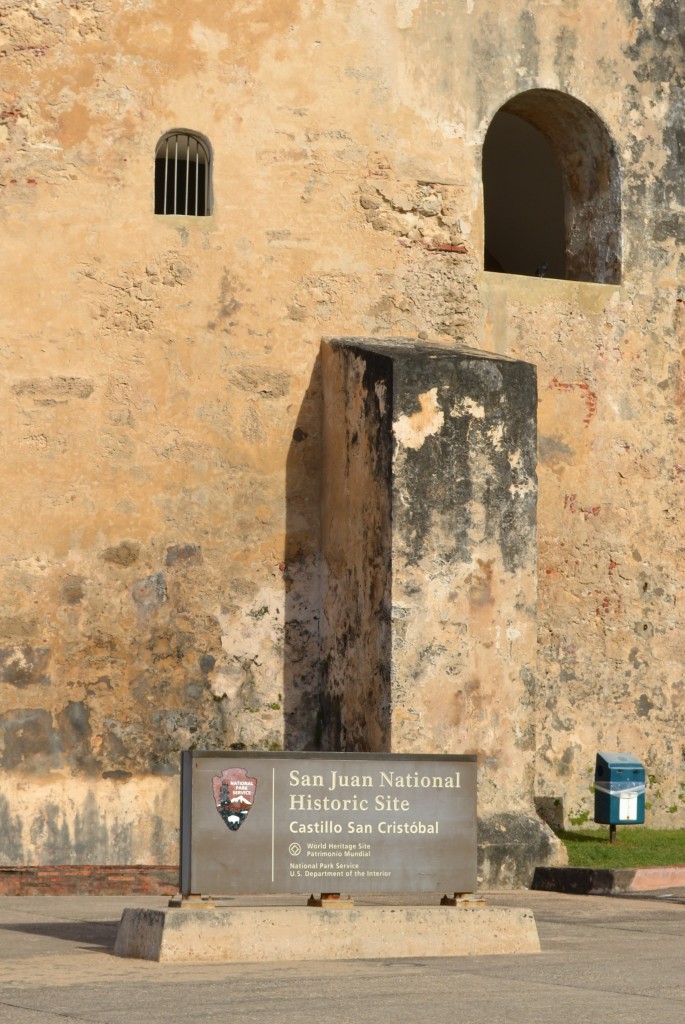
I was determined to see the two forts in Old San Juan, Puerto Rico before returning back to the States. After having an afternoon siesta, it was time to tackle the tour of San Juan’s San Cristobel Fort. There are two entries into the historical site, so I approached the main entrance with its fabulous views reaching El Morro and the Cemetery of Mary Magdalene.
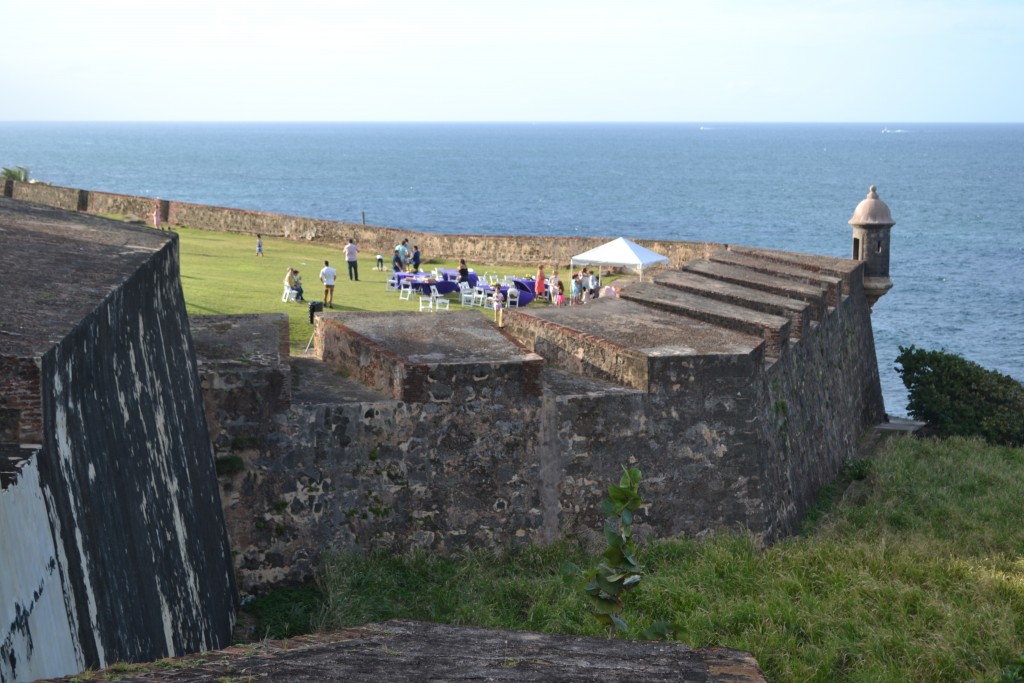
To my left, I could see the city wall. Three miles long, it connects the forts of El Morro to San Cristobel. After several attacks on San Juan beginning in 1625, the wall was finally completed in 1790, completely surrounding the city. This section of the fort, there are embrasures to support cannons once used to protect San Juan from invasion.
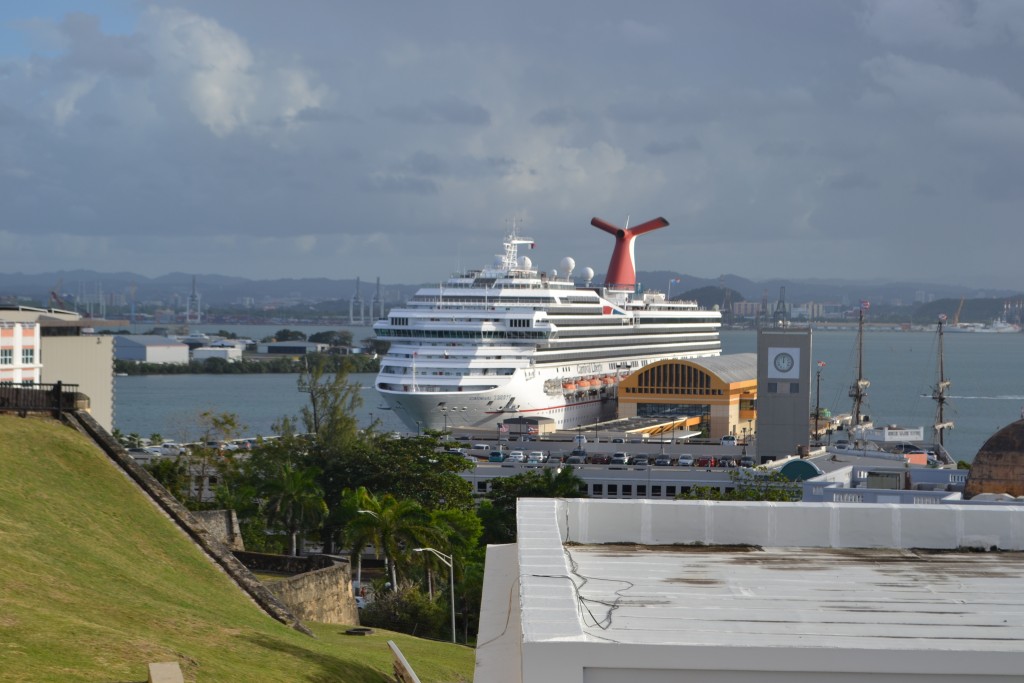
I took the ramp up to the next level where I purchased my ticket and began my self-guided tour. From a doorway nearby, I could see the Carnival Liberty docked in the harbor of San Juan.
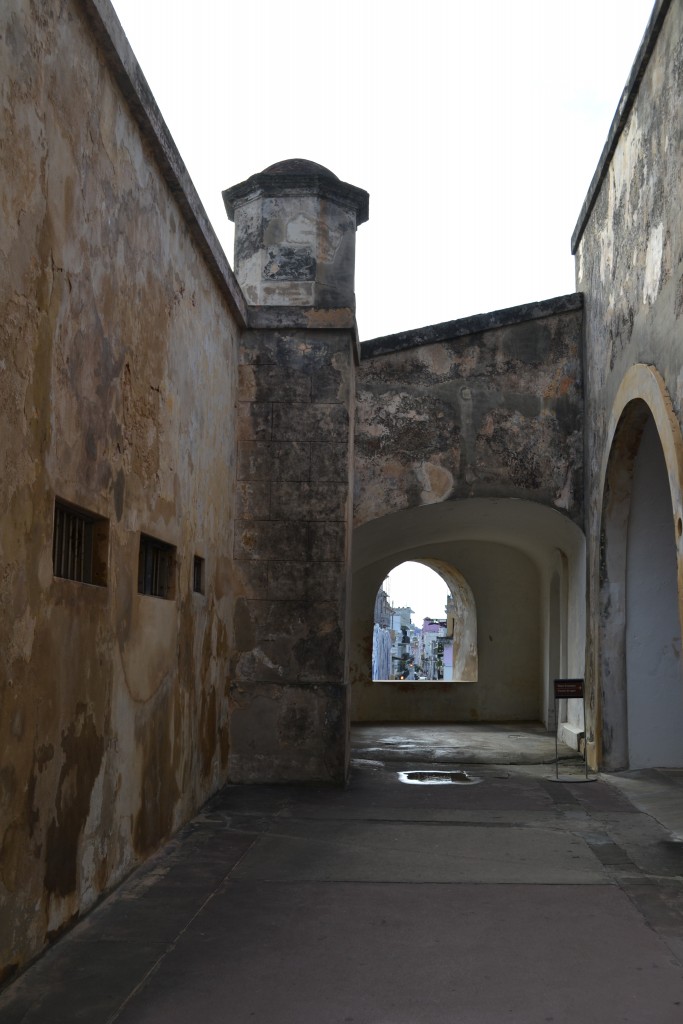
Immediately, I noticed the beautiful contrast of the old fort against the modern city of Old San Juan as I looked through one of its windows. With such an amazing charm and rich history this beautiful port hosts nearly 4 million visitors each year.
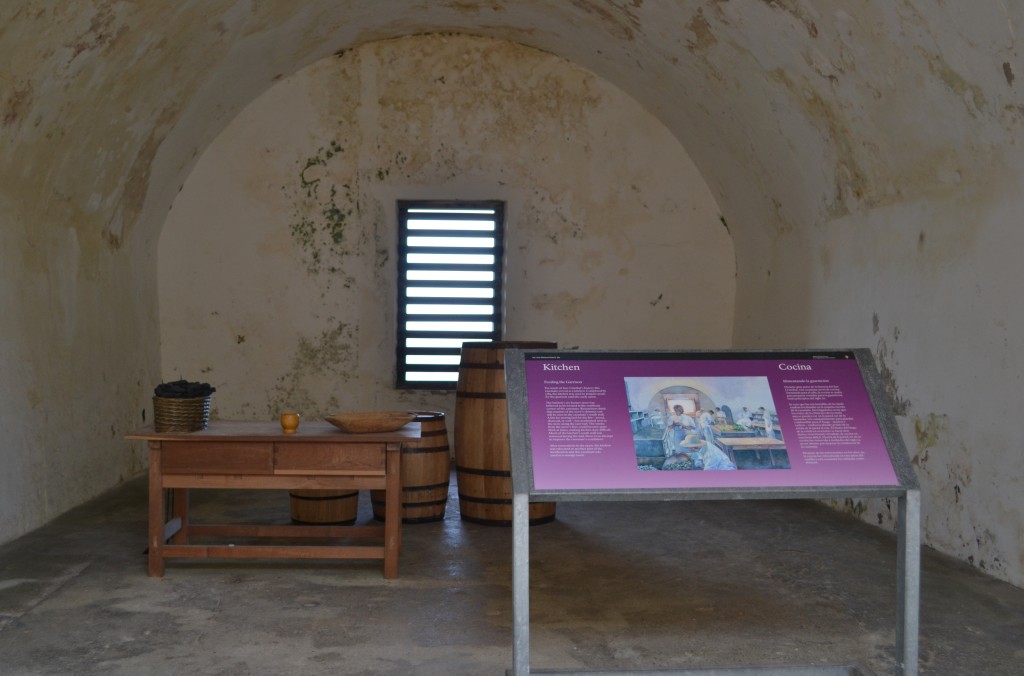
The casemate, with a vaulted chamber in a fortress, was the kitchen used to feed the soldiers of the garrison. It was believed that the kitchen had eventually moved to another area of the fort and the original location converted into a storage room.
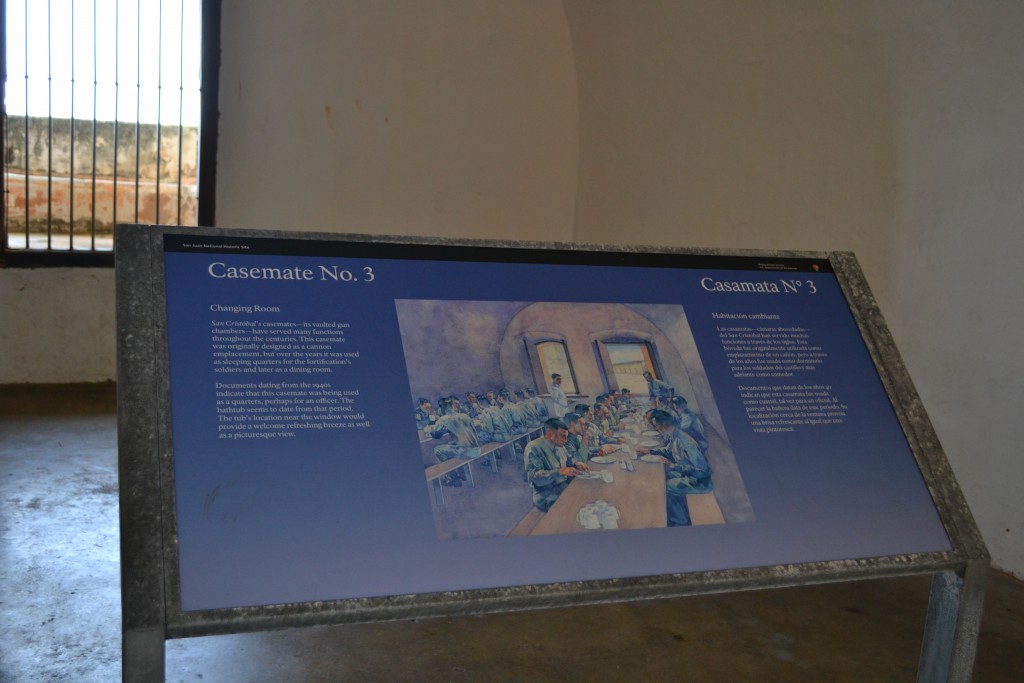
There was evidence that the Casemate Chamber No. 3 had several uses over the years. From cannon emplacement to sleeping quarters and dining room, it was believed that during WWII, it may have even been used as an officer’s quarters.
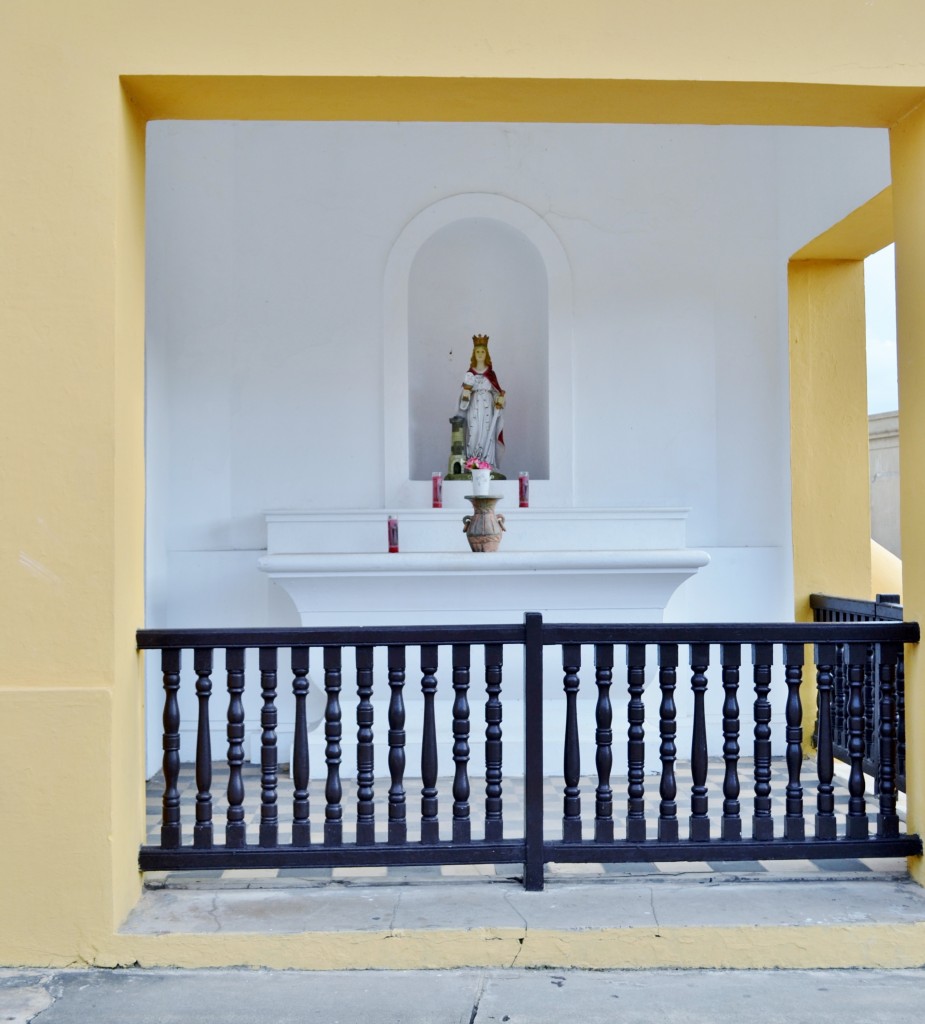
The designated Catholic place of worship was set aside in one of the casemates of the fort. Soldiers could attend weekly mass and it was also a place of daily prayer.
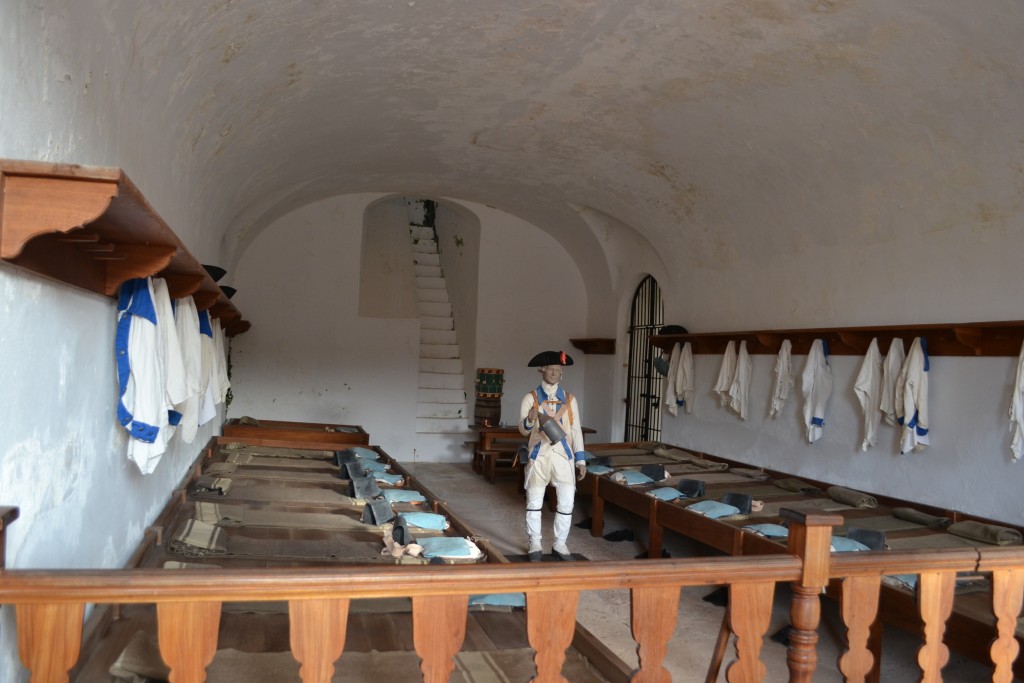
One of the compartments of the hall was set up to show the sleeping quarters of the soldiers that were stationed at the fort.
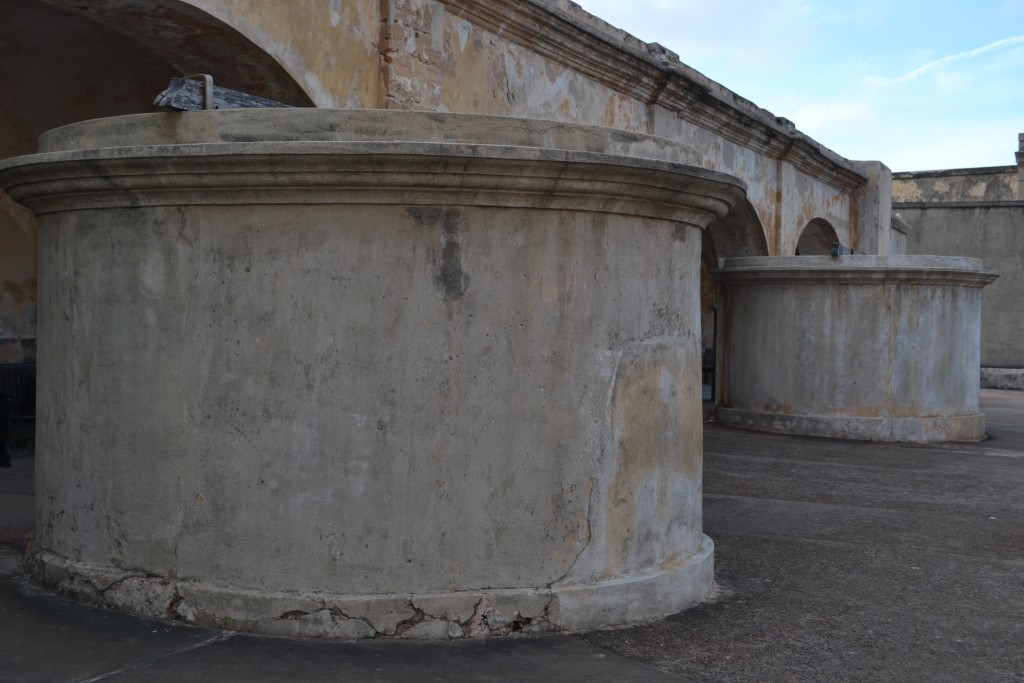
To ensure a healthy supply of water, the cisterns were built to capture rainwater for drinking. There were a total of 5 cylinders that measured 57 feet long, 24 feet high and 17 feet wide, holding a total of about 870,000 gallons of water.
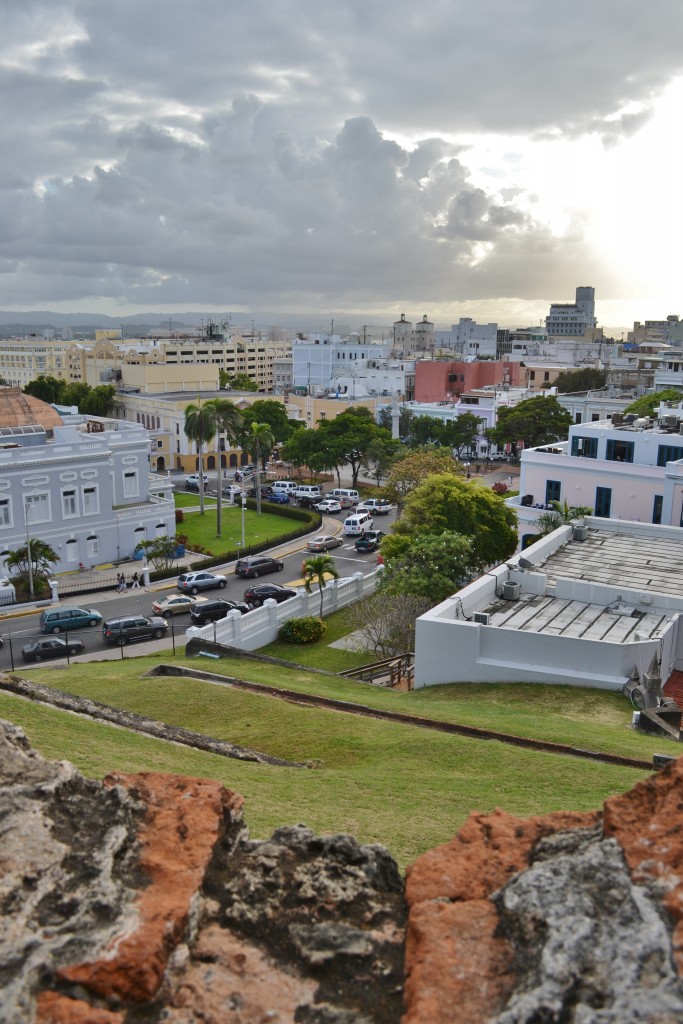
From the fort there were several views of the busy streets of Old San Juan. The lively mix of pastel left a colorful impression on the horizon.
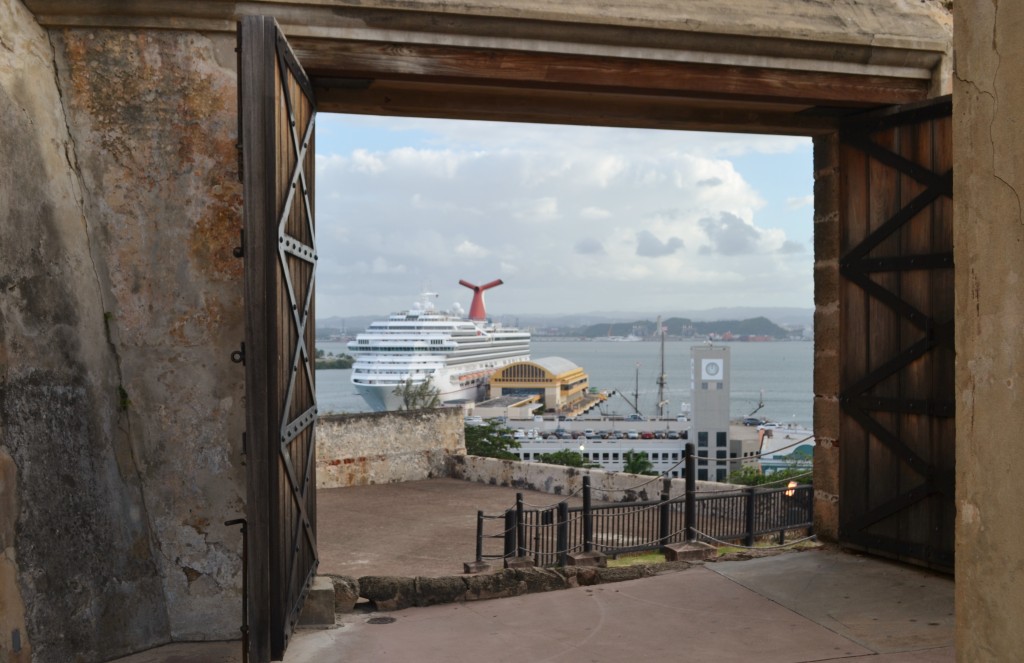
Passing several openings throughout the fort, I managed to see the cruise ship, Carnival Liberty docked in the San Juan harbor. We had just returned today but I could have easily jumped back on for another week in the Caribbean.
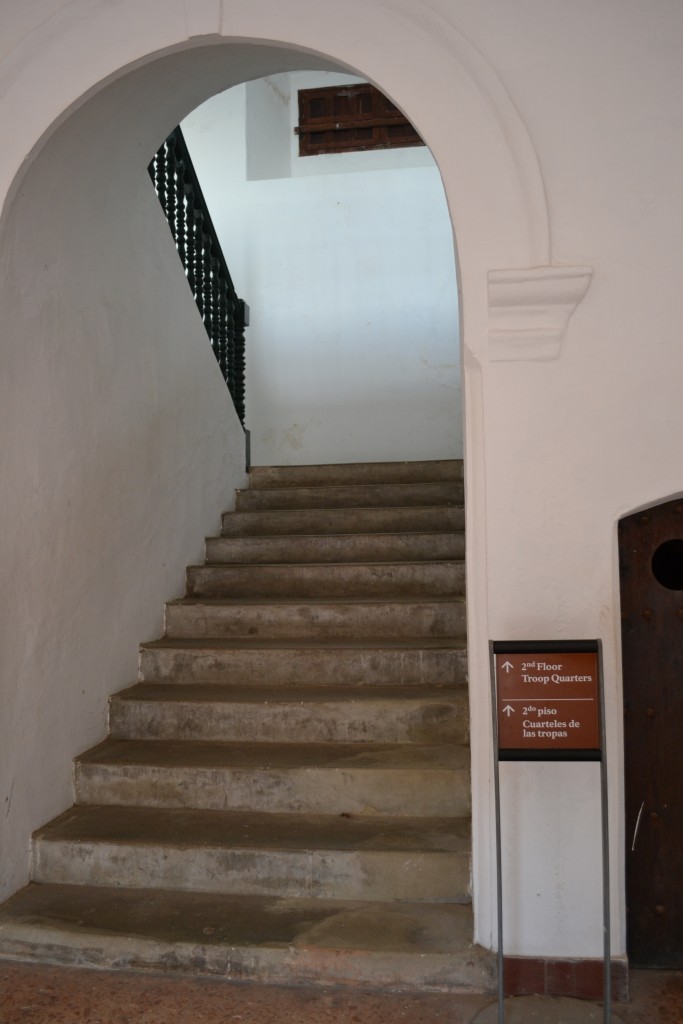
There was a set of stairs that led to the second floor where the troop quarters were located.
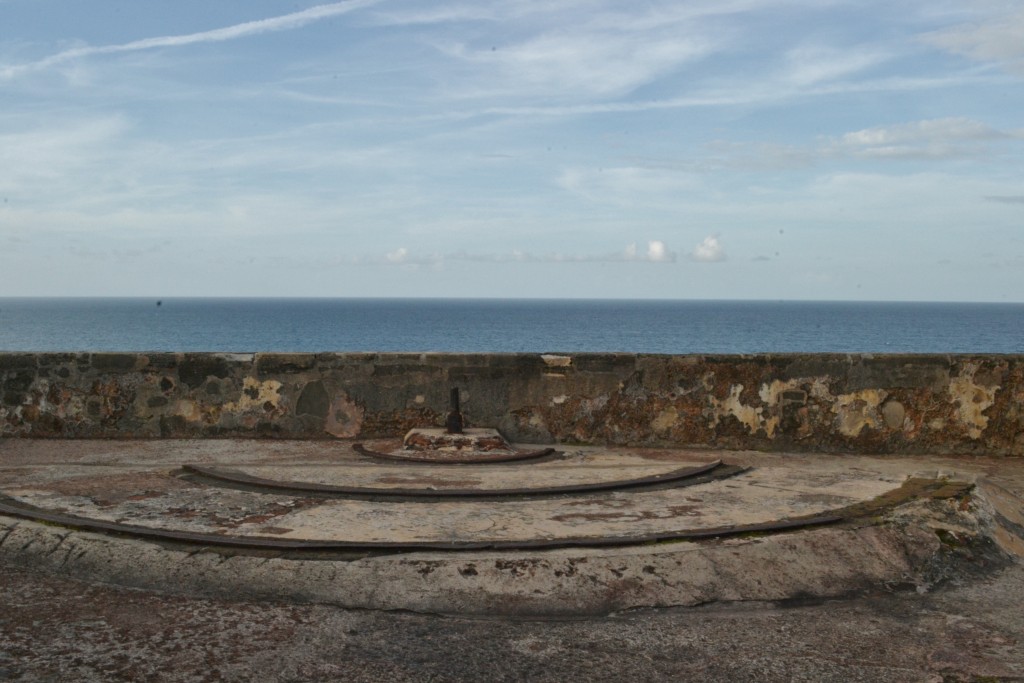
I could see where the placement of the cannons were located and the tracks for which they could maneuver them from left to right to reach the target out in the open sea.
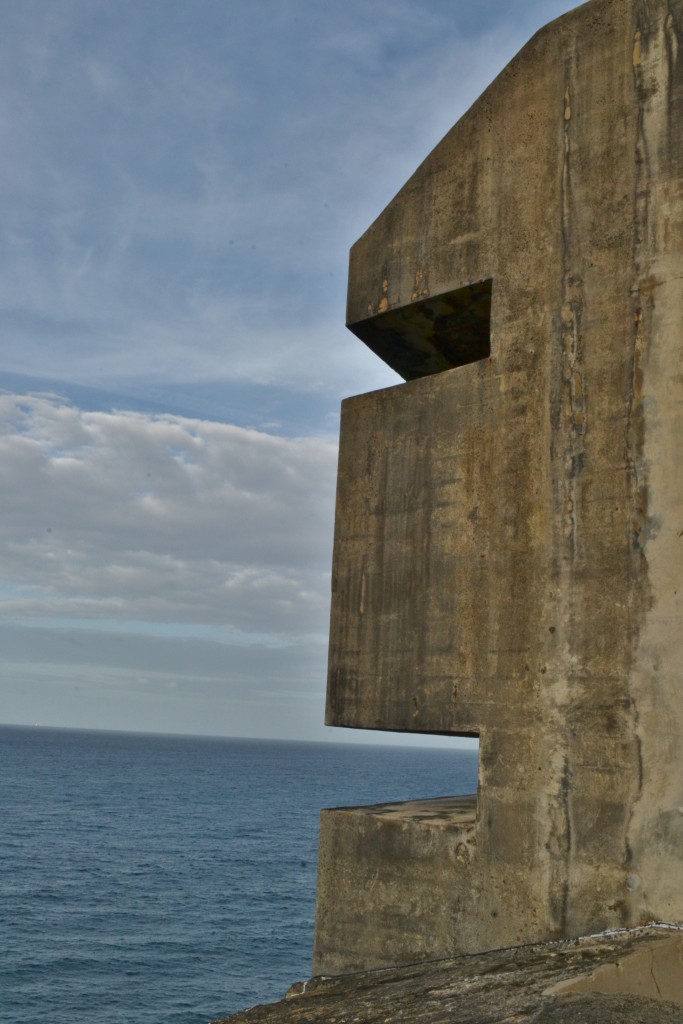
The Fire Control Station was built for use in WWII as an observation post to detect enemy ships and submarines. The information collected here was transmitted to assist in the coordination of artillery fire.
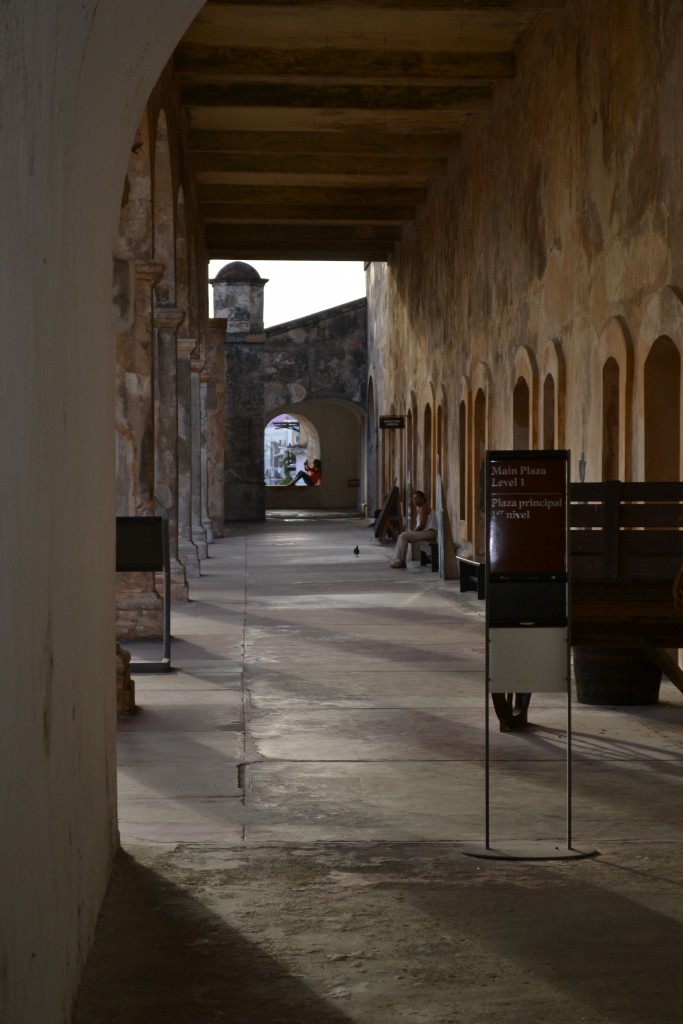
As the sun began to set, the light poured in from the arched doorways. In the distance I could see the entrance to the long tunnel that led to the dungeon and I was so excited to explore this area of the fort.
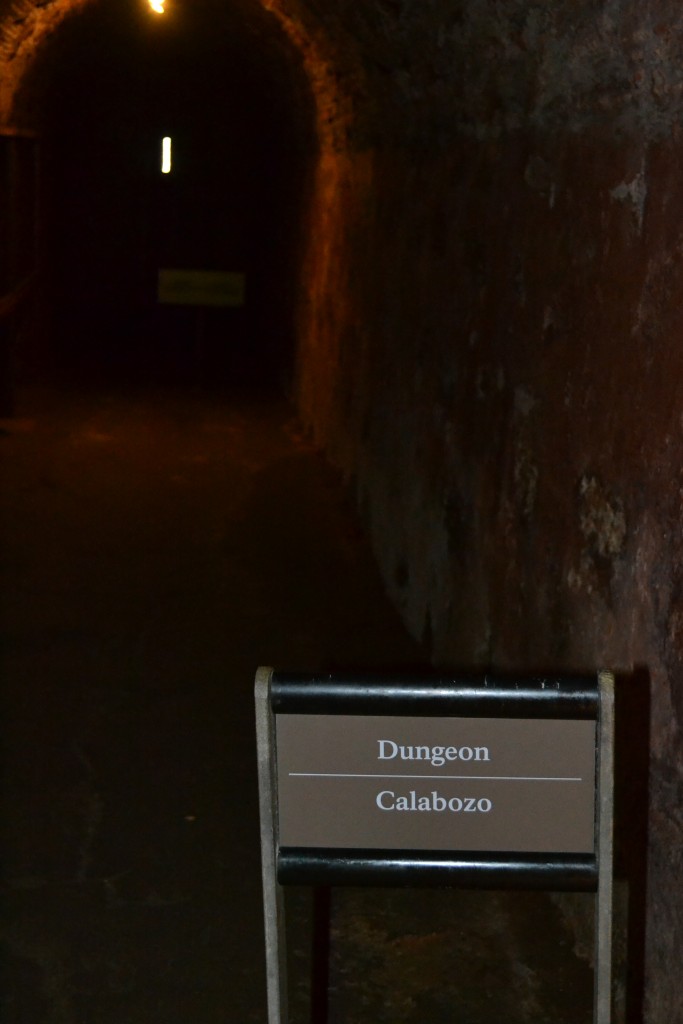
Thinking that the pathway leading to the dungeon would be dark and dreary, I was pleasantly surprised that it was quite well lit. Standing outside of the entrance, the room was unusually small which was not what I had expected, but then I entered.
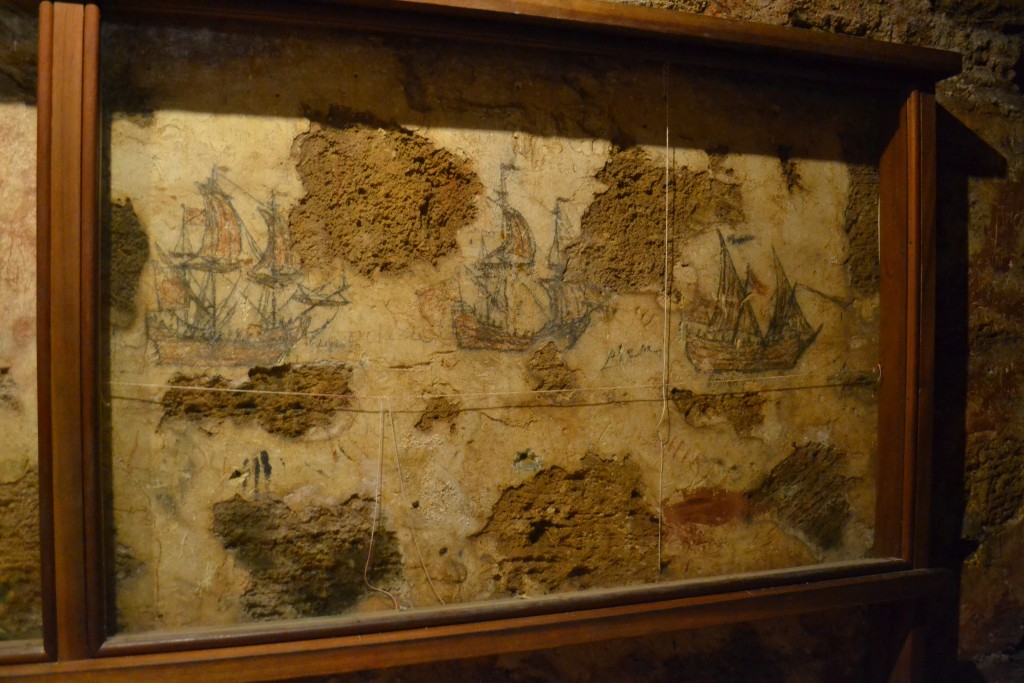
On the wall are extraordinary carvings of galleons, sailing ships from the 15th to 17th centuries. Absolutely breathtaking, these works of art are assumed to be the drawings of a ship’s captain held captive here, awaiting execution for the crime of mutiny.
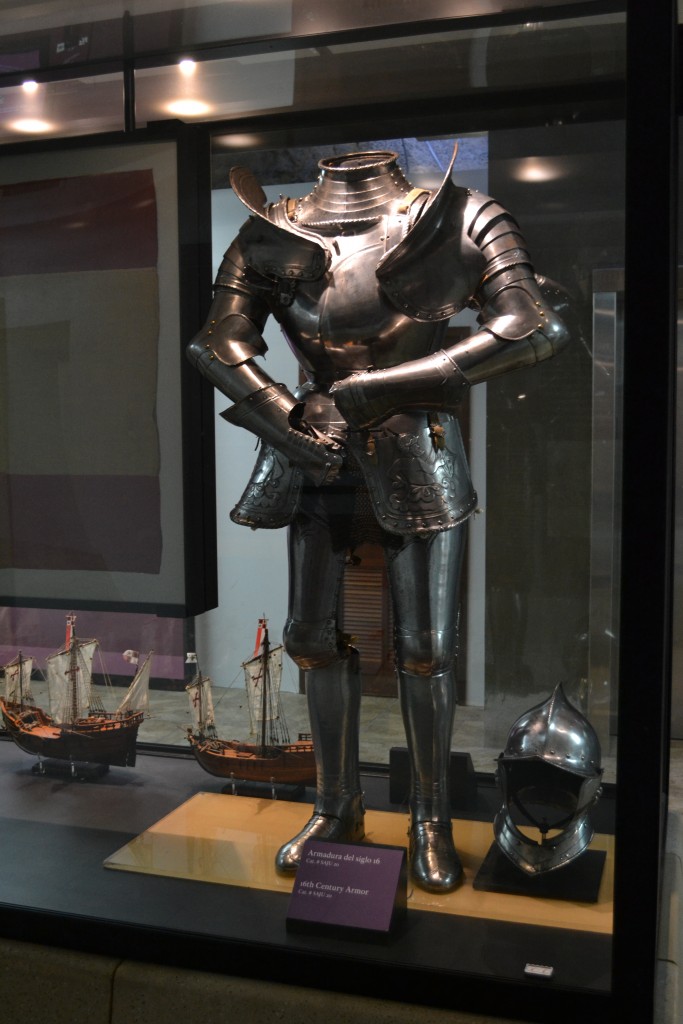
Before leaving the fort, I stopped by the gift shop and the small museum that included an exhibit about the life and times of the soldiers living at El Morro and San Cristobel. After picking up some souvenirs and having my national parks passport stamped, it was time for lunch and this would be my last chance to enjoy my favorite local dish, mofongo.
Would you consider visiting El Morro or San Cristobel forts during a visit to San Juan? I would love to hear your thoughts on attractions that are most important to you when vacationing. If you would kindly leave your thoughts in the comments section, that would be great! Many thanks for touring the Castillo San Cristobel through my blog post! Wishing you many Happy Travels!
What to See and What to Do:
Castillo San Cristobel
San Juan, 00901, Puerto Rico
Telephone: 787 449 4049
- Admission Fee: $7 which includes the Castillo San Felipe del Morro and Castillo San Cristobal and 24 hours are provided to visit both forts
- Hours: Open daily from 9AM to 6PM. Closed on Thanksgiving Day, Christmas Day and New Year’s Day.
- Amenities: Gift shop and restrooms
- Scenic Views: Gorgeous views from the fort include the harbor and the cemetery as well as the shoreline.
- Length of Visit: 2 – 3 hours
- Tips for Your Visit: There are several iguanas and feral cats that roam the premises. Wear comfortable shoes, sunscreen and bring plenty of water. (Carts outside sell water). Don’t miss the Dungeon at Castillo San Cristobel!
Where to Stay:
Hotel Plaza de Armas Old San Juan
202 Calle San Jose
San Juan, Puerto Rico 00901
Telephone: 787 722 9191
Amenities: Non-smoking, free continental breakfast, WiFi, refrigerator and microwave; there is a free trolley nearby at Stop #8
Where to Eat:
Cafe El Punto
105 Calle Fortaleza
San Juan, Puerto Rico, 00901
Telephone: 787 725 1306
What to Eat:
- MOFONGO! This is absolutely my favorite dish in San Juan. Mashed fried plantains are smothered with meat and/or vegetables.
- Alcappurias are similar to fritters filled with crab, meat or lobster and dipped in a batter made from green bananas.
- Arepas de Coco is a bread made from coconut flour stuffed with meat, seafood or vegetables.
- Chicharrones de Pollo are usually served as a side dish to mofongo, these tasty pieces of chicken are seasoned with garlic, oregano and achiote.
- Chilo Frito is a fried red snapper served with fried plantains or french fries on the side.
- Lechon is a suckling pig cooked whole and prepared juicy on the inside and crispy on the outside.
- Pastelon: San Juan’s answer to lasagna made with plantains instead of pasta
- The Pina Colada was invented at Barrachina in Old San Juan.
Where to Drink:
Marilyn’s Place
100 Calle San Francisco
San Juan, Puerto Rico, 00901
What to Read:
- The Rum Diary by Hunter S. Thompson
- The House on the Lagoon by Rosario Ferre
- Simone by Eduardo Lalo
- Mundo Cruel by Luis Negron
- La Llamarada by Enrique Laguerre
- Song of the Simple Truth by Julia de Burgos
Photo Guide for San Juan, Puerto Rico:
- La Perla in Old San Juan for its colorful umbrellas
- The cobblestone streets and colorful buildings of Old San Juan
- The Forts in Old San Juan
Disclosure: Please refer to our blog disclaimer tab for more information.
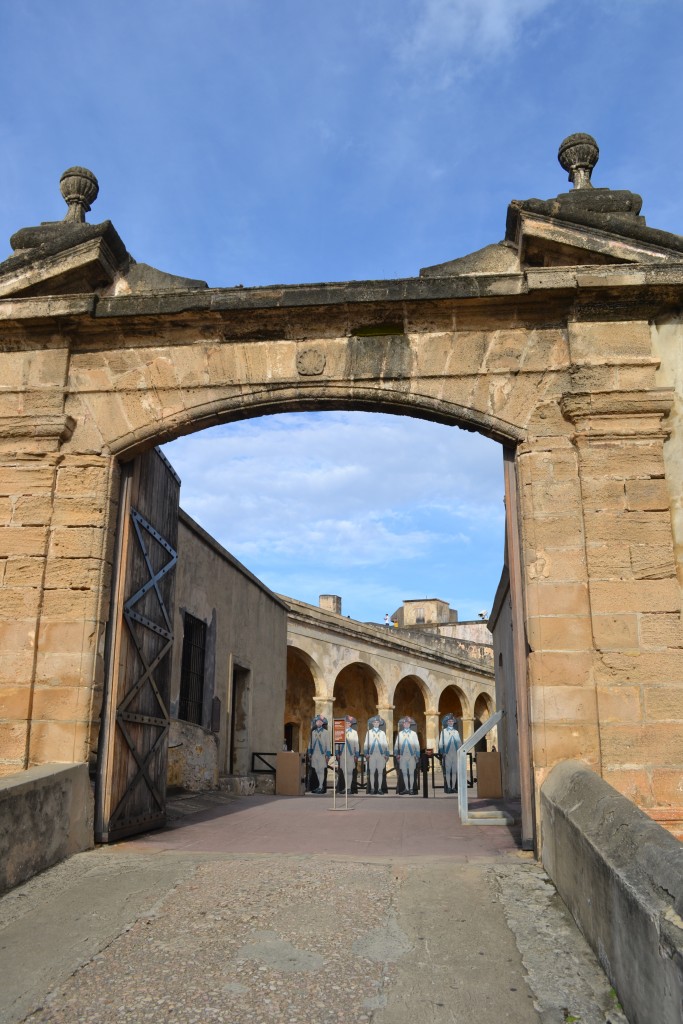
Approaching the entrance to Castillo San Cristobel
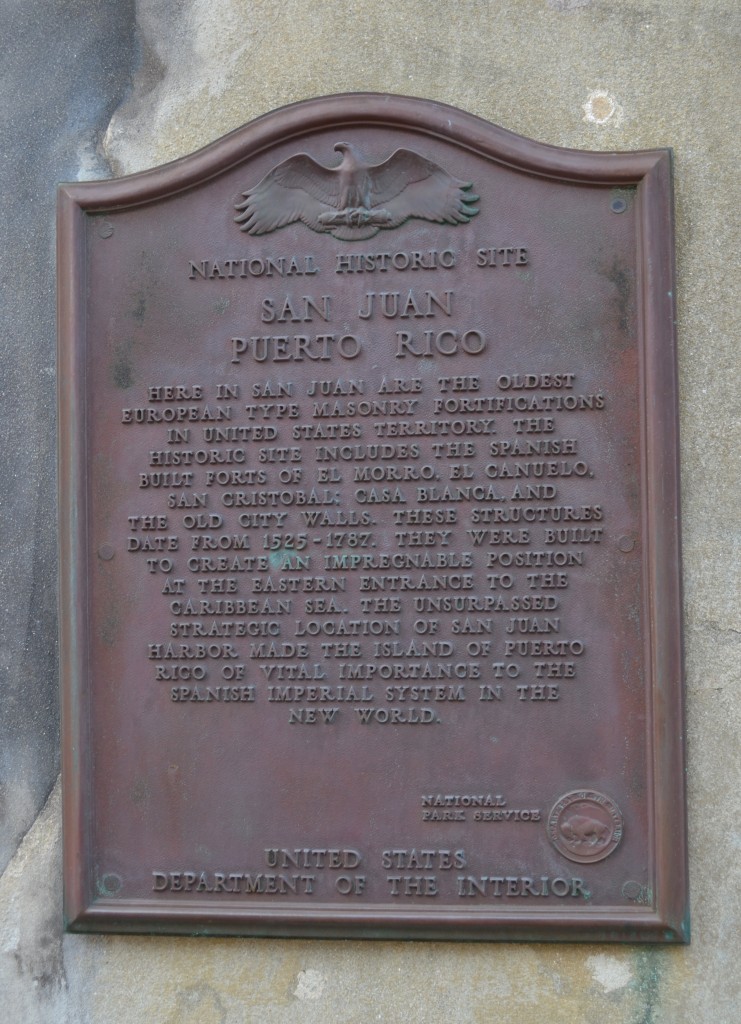
Plaque designating this site as a National Historic Site
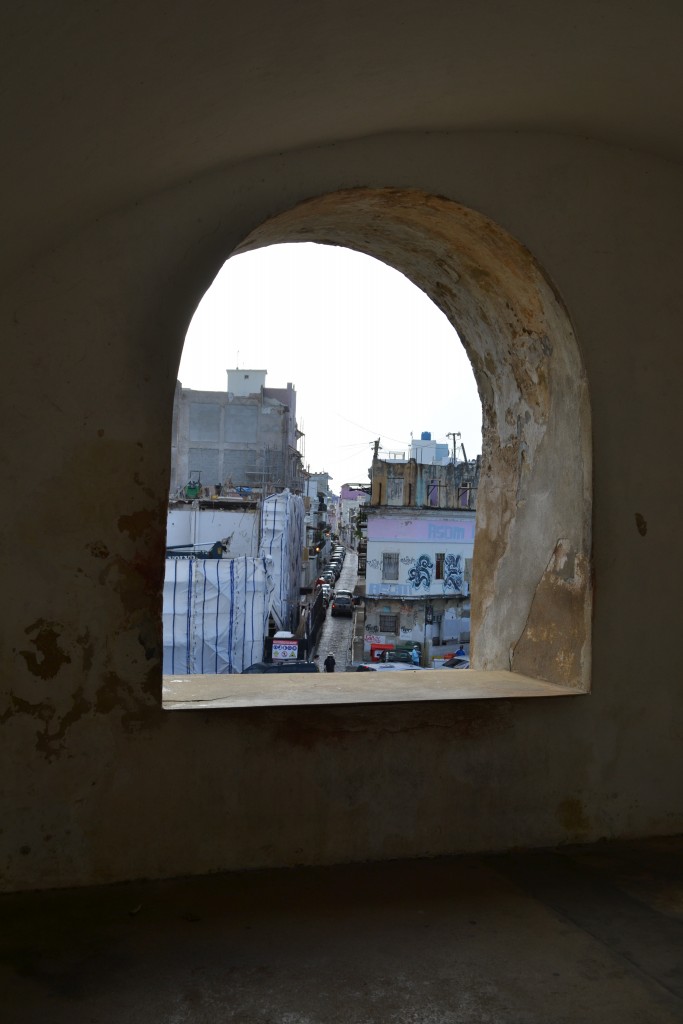
The Contrast between old and modern in San Juan, Puerto Rico
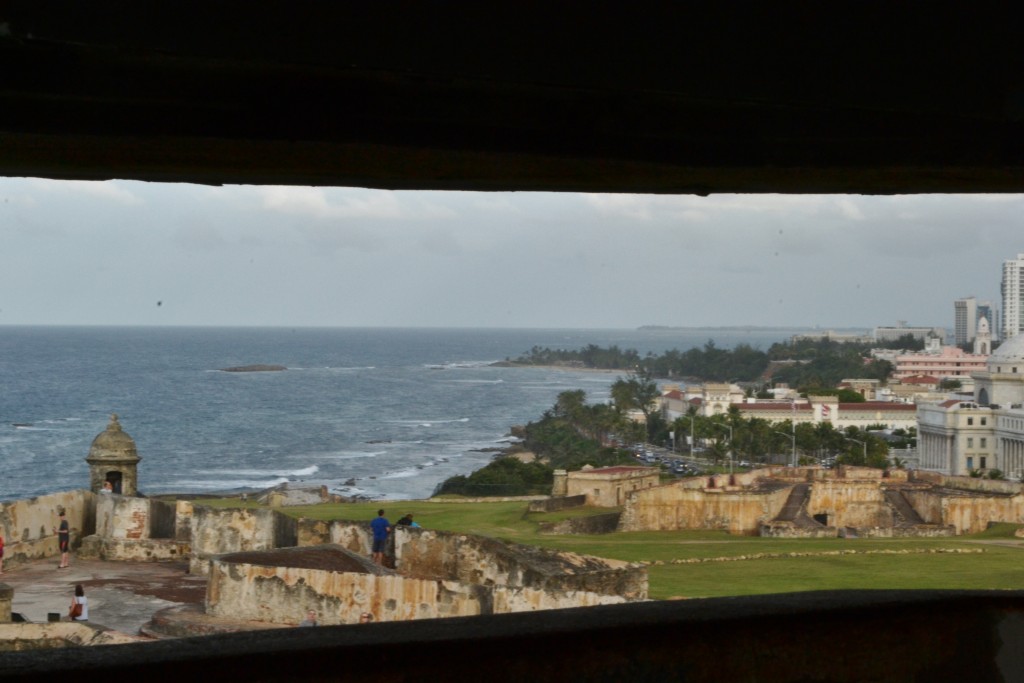
Looking out from the Fire Control Station
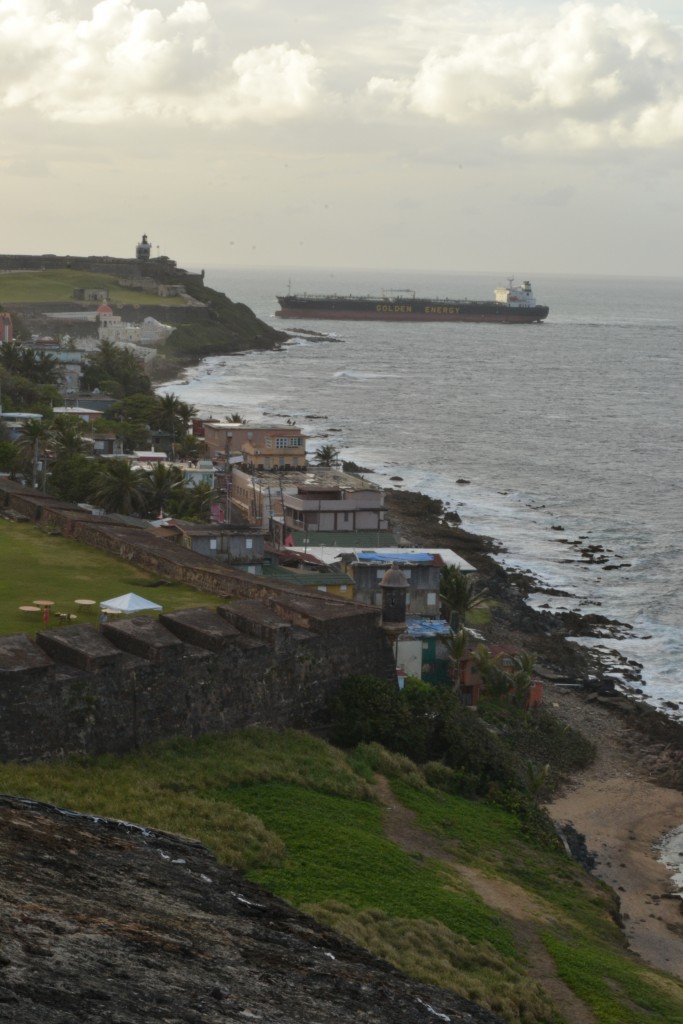
Spectacular view from San Cristobel to El Morro
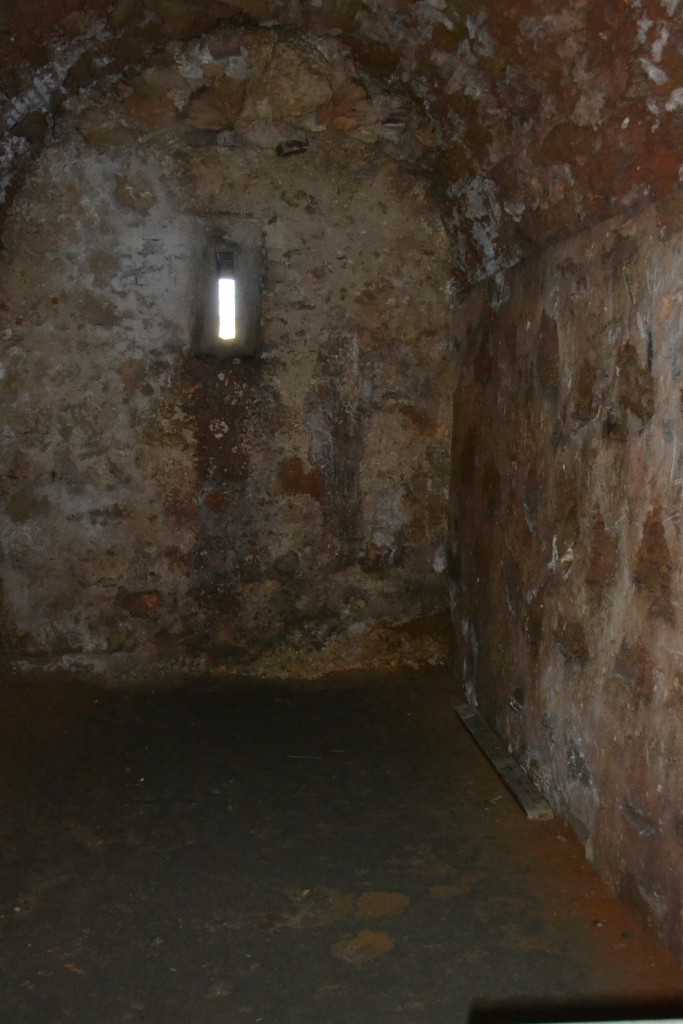
Inside of the Dungeon, San Juan, PR
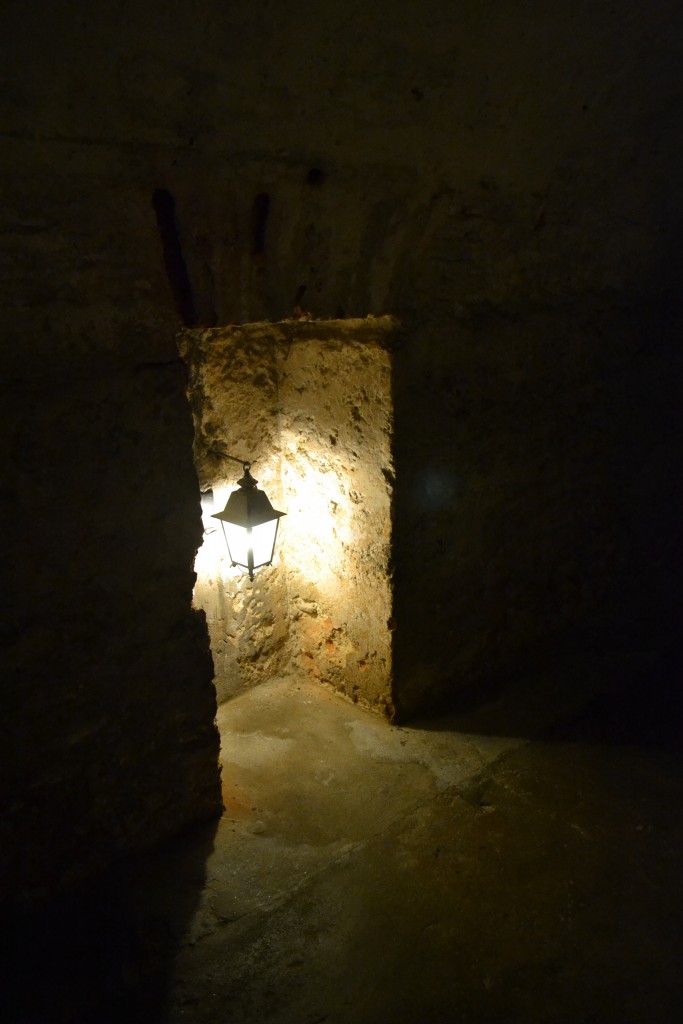
Well lit tunnel leading to the dungeon
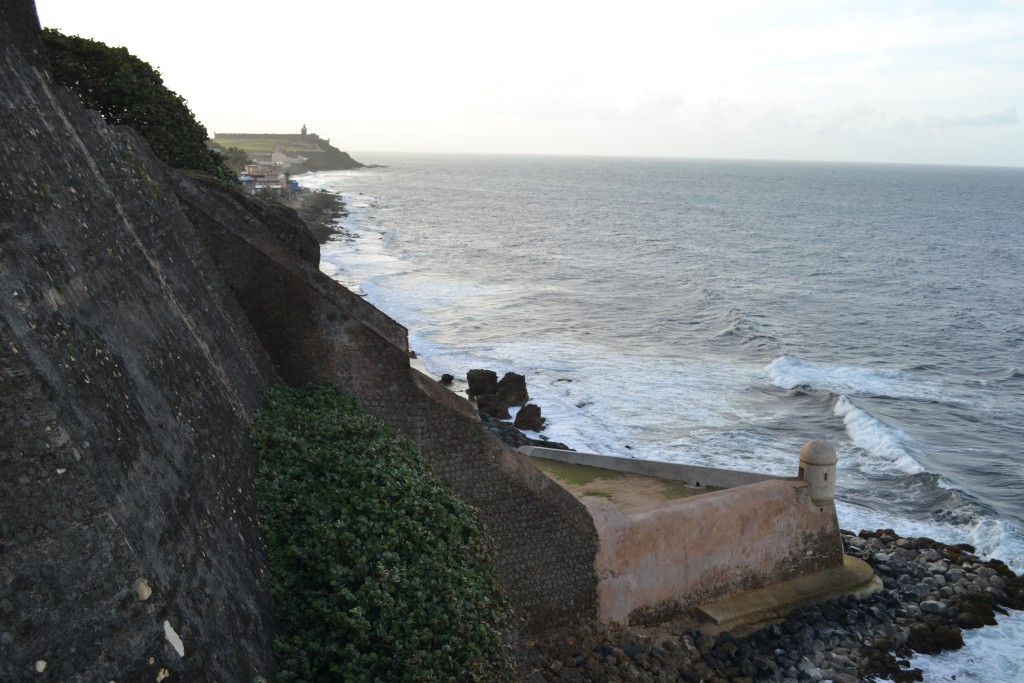
Scenic Coastal View from San Cristobel to El Morro